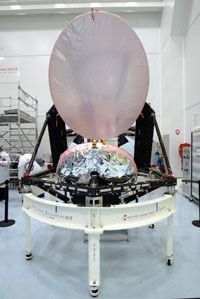Problems With the Big Bang Theory
Since scientists first proposed the big bang theory, many people have questioned and criticized the model. Here's a rundown on some of the most common criticisms of the big bang theory:
- It violates the first law of thermodynamics, which says you can't create or destroy matter or energy. Critics claim that the big bang theory suggests the universe began out of nothing. Proponents of the big bang theory say that such criticism is unwarranted for two reasons. The first is that the big bang doesn't address the creation of the universe, but rather the evolution of it. The other reason is that since the laws of science break down as you approach the creation of the universe, there's no reason to believe the first law of thermodynamics would apply.
- Some astrophysicists and cosmologists argue that scientists have misinterpreted evidence like the redshift of celestial bodies and the cosmic microwave background radiation. Some cite the absence of exotic cosmic bodies that should have been the product of the big bang according to the theory.
- The early inflationary period of the big bang appears to violate the rule that nothing can travel faster than the speed of light. Proponents have a few different responses to this criticism. One is that at the start of the big bang, the theory of relativity didn't apply. As a result, there was no issue with traveling faster than the speed of light. Another related response is that space itself can expand faster than the speed of light, as space falls outside the domain of the theory of gravity.
There are several alternative models that attempt to explain the development of the universe, though none of them have as wide an acceptance as the big bang theory:
Advertisement
- The steady-state model of the universe suggests the universe always had and will always have the same density. The theory reconciles the apparent evidence that the universe is expanding by suggesting that the universe generates matter at a rate proportionate to the universe's rate of expansion.
- The Ekpyrotic model suggests our universe is the result of a collision of two three-dimensional worlds on a hidden fourth dimension. It doesn't conflict with the big bang theory completely, as after a certain amount of time it aligns with the events described in the big bang theory.
- The big bounce theory suggests our universe is one of a series of universes that first expand, then contract again. The cycle repeats after several billion years.
- Plasma cosmology attempts to describe the universe in terms of the electrodynamic properties of the universe. Plasma is an ionized gas, which means it's a gas with free roaming electrons that can conduct electricity.
There are several other models as well. Could one of these theories (or other ones we haven't even thought of) one day replace the big bang theory as the accepted model of the universe? It's quite possible. As time passes and our capability to study the universe increases, we'll be able to make more accurate models of how the universe developed.
To learn more about the big bang and related topics, take a look at the links that follow.
The Big Bang Theory FAQ
Who discovered the big bang theory?
How did the big bang happen from nothing?
What is the big bang theory in simple terms?
What does the big bang theory tell us?
How did the big bang start?
Related Articles
More Great Links
Sources
- "Big Bang Theory -- An Overview." All About Science. http://www.big-bang-theory.com/
- "Cambridge Cosmology: Hot Big Bang Model." Cambridge University. http://www.damtp.cam.ac.uk/user/gr/public/bb_home.html
- Castellanos, Joel. "The Shape of Space." NonEuclid. http://www.cs.unm.edu/~joel/NonEuclid/space.html
- Felder, Gary. "Beyond the Big Bang: Inflation and the Very Early Universe." North Carolina State University. 2002. http://www4.ncsu.edu/unity/lockers/users/f/felder/public/kenny/papers/inflation.html
- Feuerbacher, Bjorn and Scranton, Ryan. "Evidence for the Big Bang." TalkOrigins Archive. Jan. 25, 2006. http://www.talkorigins.org/faqs/astronomy/bigbang.html
- "The Geometry of the Universe." Astronomy 162. University of Tennessee. http://csep10.phys.utk.edu/astr162/lect/cosmology/geometry.html
- Hawking, Stephen. "A Brief History of Time." Bantam Books. New York. 1998.
- LaRocco, Chris and Rothstein, Blair. "The Big Bang: It sure was Big!" University of Michigan. http://www.umich.edu/~gs265/bigbang.htm
- Marmet, Paul. "Big Bang Cosmology Meets an Astronomical Death." 21st Century, Science and Technology. Vol. 3, No. 3. 1990. http://www.newtonphysics.on.ca/BIGBANG/Bigbang.html
- "Mysteries of Deep Space." Engle Brothers Media, Inc. PBS. http://www.pbs.org/deepspace/
- Plait, Phil. "What happened before the Big Bang?" Bad Astronomy. July 2007. http://www.badastronomy.com/bablog/2007/07/01/what-happened-before-the-big-bang/
- Plasma Cosmology. http://www.plasmacosmology.net/
- Shestople, Paul. "Big Bang Cosmology Primer." University of California, Berkeley. December 24, 1997. http://cosmology.berkeley.edu/Education/IUP/Big_Bang_Primer.html
- Steinhardt, Paul J. "A Brief Introduction to the Ekpryotic Universe." Princeton University. http://www.physics.princeton.edu/~steinh/npr/
- "Universe 101: Big Bang Theory." NASA. http://map.gsfc.nasa.gov/universe/bb_theory.html
- Voisey, Jon. "The Big Bang - Common Misconceptions." The Angry Astronomer. July 29, 2006. http://angryastronomer.blogspot.com/2006/07/big-bang-common-misconceptions.html
- "What is the structure of the universe?" The Official String Theory Web Site. http://www.superstringtheory.com/cosmo/cosmo2.html
- Wright, Edward L. "Cosmology Tutorial." Retrieved June 2, 2008. Last modified May 27, 2008. http://www.astro.ucla.edu/~wright/cosmolog.htm
